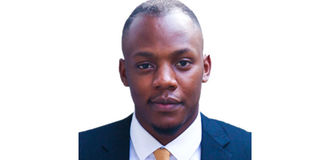Making sense of events in Afghanistan

What you need to know:
...while this unrest tells us a not so novel story about those (self-proclaimed saviour nations) who flee in times of crisis, it points us to a more critical question
On Sunday, August 15, the capitol of Afghanistan, Kabul, was left in chaos as revitalised Taliban soldiers overrun Afghan security forces in the capital and took control of the presidential palace.
Together with distressed Afghan civilians were more troubled but organised foreign embassies, peacekeepers, and some humanitarian organisations, who were busy organising flight schedules to find the quickest way out of the country.
Among those fleeing were the auxiliary Afghan American-trained security forces who were overrun in a matter of days. In a true Machiavellian script, these Afghan troops were never guaranteed to be relied on and neither were those that trained them.
The US President, Joe Biden, can tell us how the US.’s mission was never nation-building. In actuality, though, the United States vigorously pursued a particular vision of a nation-state in Afghanistan, one after the Americans’ self-image, for the past two decades. Therefore, the military structures of this Afghan state were based on the military might of the Americans. As the Americans withdrew, so did the will to fight of the Afghan auxiliary forces.
In a White House televised address on the August 16, President Biden shifted the blame to the Afghan government. This was after the Afghan government had refused to take his advice to negotiate a political settlement as a BBC report read. One would be drawn to then question why such a political settlement was not pursued in the first place while American forces occupied and trained Afghan security personnel for close to two decades. But that is a discussion for another day.
For the Taliban, one would consider their project as a nation-building project. A struggle with the question around what and who do we build the Afghan nation? The US sought to answer this question by imposing a Western democracy which solution took but a few days to collapse after nearly two decades of construction. This question I believe is still the preoccupation today; what should the Afghan nation-state look like?
For the Afghan Taliban, theirs is a need to transform Afghan society into the home of the nation as they imagine it, built around strict enforcement of Sharia law and free from foreign occupation and imperialism that sought to mold Afghanistan into the image of the West.
The result of this nation-building violence as Mahmood Mamdani narrates in his new book Neither Settler nor Native, is either an era of blood and terror, ethnic cleansing, or civil wars. This is particularly because “those excluded by new boundaries of nationhood turn to a new round of violence in order to establish a national political community in which they are included, necessarily excluding others”. The Taliban movement was built from this exclusion by Soviet foreign power in the 1980s and similarly has been able to resurface in a western imposed democracy that sought to exclude them so that they may not only include themselves but rather also define the terms of inclusion and exclusion in the new Afghan state.
Therefore, while this unrest tells us a not so novel story about those (self-proclaimed saviour nations) who flee in times of crisis, it points us to a more critical question concerning the modern nation-state and the pitfalls of political modernity. It draws us to understand political violence from a series of historical and political events in a given context, rather than perceive them in the here and now.
David Muinga, PhD Fellow, Makerere Institute of Social Research.




